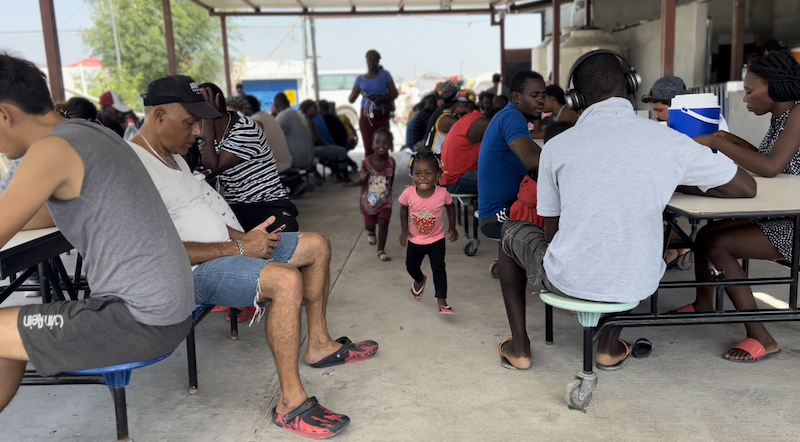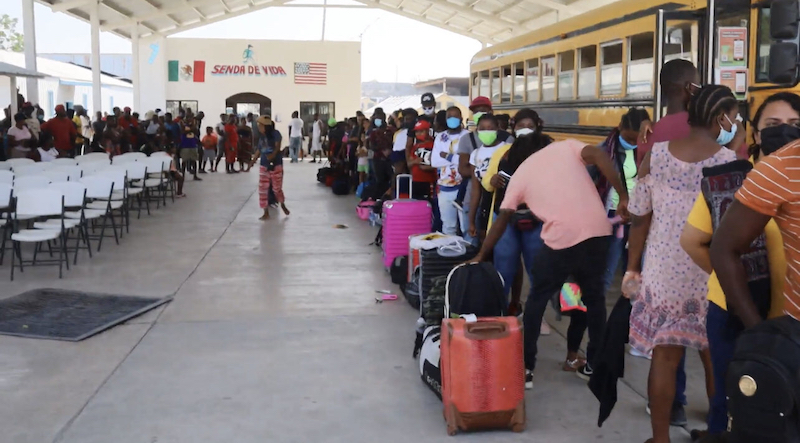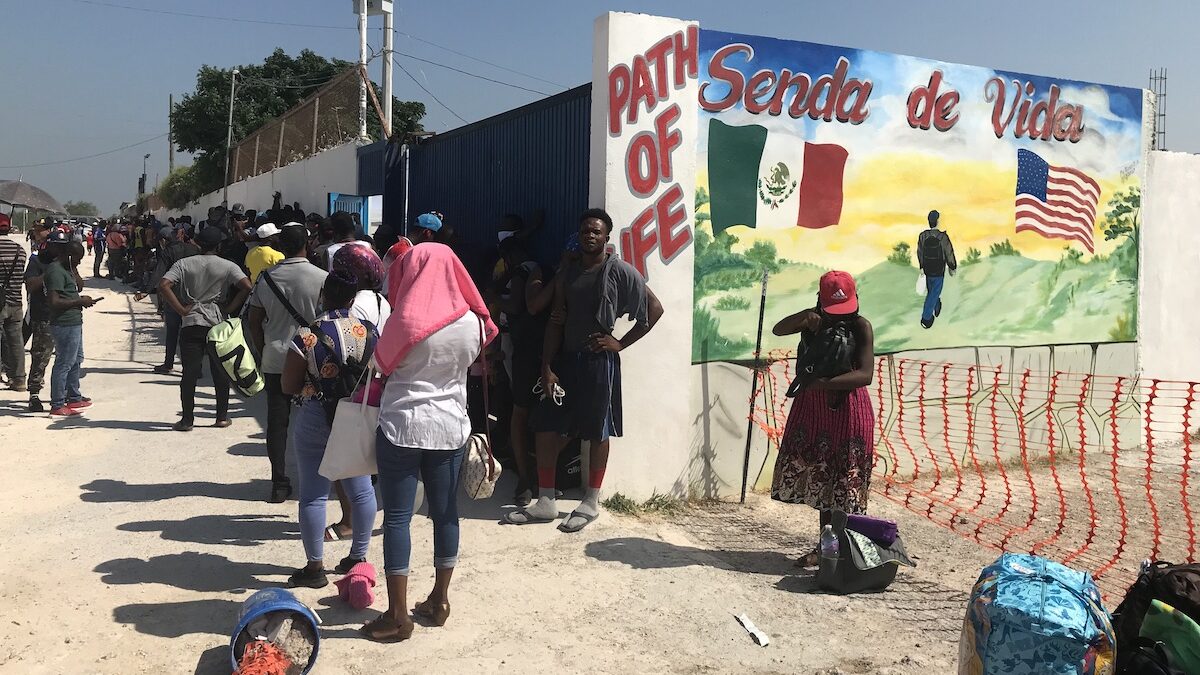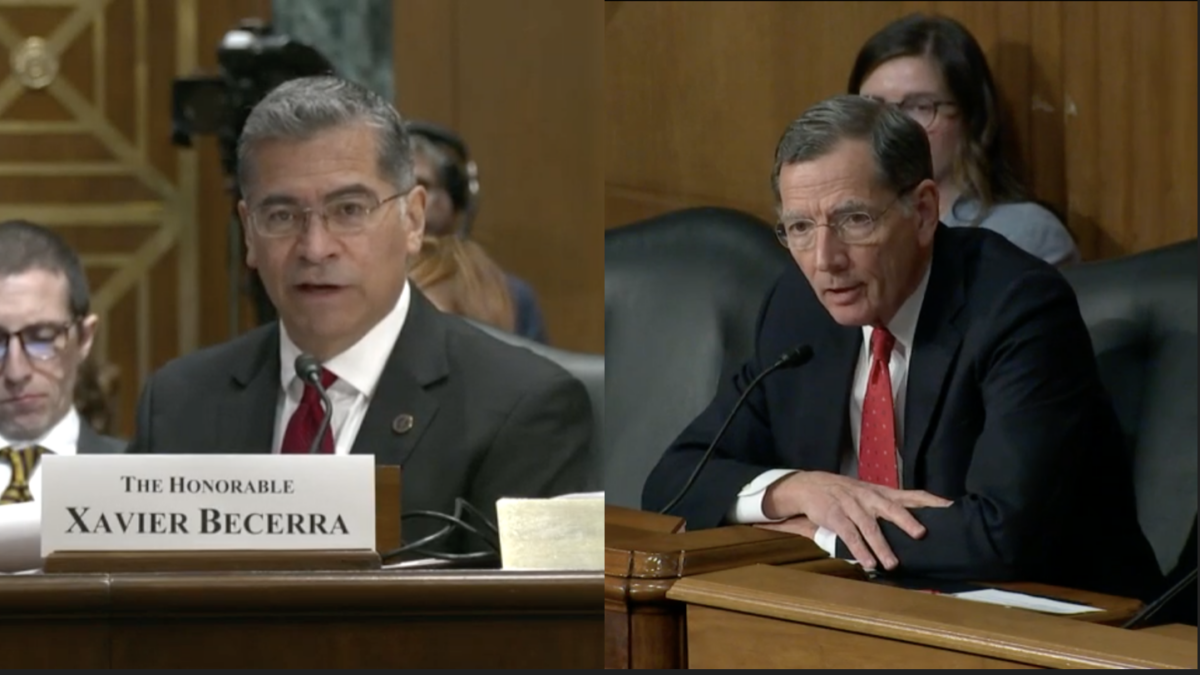Editor’s note: This is the first of a two-part series. Part two will be published next week.
REYNOSA, Mexico — We met Osniel at Senda de Vida, a massive migrant shelter situated on the south bank of the Rio Grande across from McAllen, Texas. The slender 23-year-old Cuban didn’t give us his last name, but did tell us he’d paid a coyote, or smuggler, $11,000 to leave his home country, transit through Central America and Mexico, and cross the border into the United States — twice.
Both times he crossed, though, he’d been arrested by Border Patrol and quickly sent back to Mexico under Title 42, the pandemic health order that allows U.S. authorities to expel illegal immigrants quickly, with minimal processing. When Osniel left Cuba in early April, Title 42 didn’t apply to Cubans. But that changed while he was en route.
On April 27, the Biden administration cut a deal with Mexico to begin expelling up to 100 Cubans and 20 Nicaraguans a day from three border facilities. For Osniel, it was just bad timing — he crossed the river on April 29.
“Title 42 was active under Donald Trump, and all this time, all this time Cubans were crossing over the river and entering with a humanitarian visa,” Osniel told me and a pair of colleagues, Emily Jashinsky and David Agren, who accompanied me recently to migrant shelters in Reynosa and Matamoros. “Now, Cubans keep trying to cross the river and they keep getting sent back.”
He said he wasn’t sure what he was going to do now. Having tried to cross the border twice, he couldn’t try again without paying the local cartel, and he had no more money. (Nearly everyone who crosses the Rio Grande in the Mexican state of Tamaulipas, where Reynosa is situated, has to pay a tax to the cartels, which have been profiting handsomely from the arrangement.)
Early the next morning, around 2 a.m., Osniel called David in a panic. He had swam across the river, he said, but hadn’t paid, and now feared he was being pursued by cartel gunmen. He said he was hiding on the north bank of the Rio Grande.
A GPS pin on WhatsApp showed he was just outside the town of Hidalgo, Texas, not far from the international bridge. He wanted David to call the police or Border Patrol to come pick him up before the cartel found him. David got ahold of the local police but they said it was Border Patrol’s responsibility, and no one picked up the phone at the McAllen Border Patrol station that night.
Osniel’s last communication, via WhatsApp, was at 5:52 a.m. The GPS pin showed he was on the U.S. side of the border, near the riverbank. We haven’t heard from him since.
In Northern Mexico, Illegal Immigration Has Become A Vast Black Market
Over the past year, illegal immigration along the southwest border has reached historic highs, with nearly 2.5 million arrests since last April. U.S. border authorities apprehended on average more than 6,725 illegal immigrants every day in April, the highest number ever recorded. (As of this writing, U.S. Customs and Border Protection has yet to release numbers for May, which will almost certainly be higher than April’s.)
(UPDATE: CBP released May numbers on Wednesday, June 15, after press time. There were a record 239,416 encounters with illegal immigrants along the southwest border last month, the highest monthly total ever, surpassing April’s record. So far in the 2022 fiscal year, about 1.5 million illegal immigrants have been arrested by Border Patrol. With four months remaining in FY2022, border arrests are almost certain to surpass 2 million.)
Why are so many coming now? We asked that question to every migrant we spoke to in Mexico and Texas, and nearly every one of them at some point said that they had heard it was a good time to come, that they would be able to get in. They’re not wrong.
What they find upon arriving in northern Mexico, however, is not what many of them expected. For some, like Osniel, Title 42 still represents a real obstacle (although since Joe Biden took office, fewer and fewer illegal immigrants are being expelled under its authority). All of them, though, are drawn into a vast criminal enterprise run by cartels that have in recent years transformed illegal immigration into an industrialized black market. Elias Rodriguez, director of a migrant shelter run by the Catholic Diocese of Matamoros, told us bluntly that “everyone who arrives here has paid.”
Indeed, migrants transiting Mexico must not only make sure they have paid whichever cartel controls the area of the border they intend to cross, they often have to pay off Mexican officials en route to the border. More than one person told us how the bus they were on was stopped in Monterrey, or outside Reynosa, and boarded by federal or state officials who asked for everyone’s papers. Those without papers had to pay.
Setting aside the impossibility of confirming these accounts, the proof of such official corruption on a mass scale is the mere fact that hundreds of thousands of migrants arrive at northern Mexican border cities each month. They are here, and they could have gotten here only by paying their way.

Signs of this illegal immigration black market lurk behind nearly every individual migrant’s story. We don’t know, for example, why Osniel changed his mind about crossing the river. At the shelter, he told us he was going to wait there because it was too dangerous to leave. He said men had tried to assault him when he ventured out into Reynosa at one point, and that it wasn’t safe anywhere outside the shelter’s walls.
Maybe he realized there was no other way into the United States. Maybe he was unwilling to wait any longer at the shelter. He’d told us that he follows the news about U.S. border policy closely, so maybe he saw that a U.S. judge recently ordered the Biden administration to keep Title 42 in place instead of ending it on May 23 as planned.
Whatever changed Osniel’s mind, his plight is shared by tens of thousands of other migrants in Reynosa, Matamoros, and Mexican cities all along the border. They are caught between a black market smuggling industry run by ruthless cartels and a mercurial U.S. immigration bureaucracy that seems to adopt new policies and rules every week.
For a certain segment of the migrant population in Mexico, that means they’re stuck. For those who can’t afford to pay the cartels, crossing the river without permission is dangerous. It’s unlikely that Osniel was actually pursued across the river by armed men, but he was lucky to slip by them in Reynosa and make it over to the north bank. In Matamoros, we were told of several migrant groups that tried to cross without paying, and cartel members actually went out into the river and forcibly returned them to the Mexican side.
Others simply refuse to cross illegally, even with the aid of cartel-affiliated smugglers. These are mostly Haitian migrants, and they make up the vast majority of those staying at the shelters in Reynosa and Matamoros. Many of them say they will not cross illegally because they fear being arrested and deported to Haiti, a country most of them left many years ago.
The vast majority of Haitian migrants now in Mexico had until recently been living legally in Chile, Brazil, and other countries in South America. Indeed, of the dozens of Haitian migrants we interviewed, not one had recently lived in Haiti, and none wanted to return there.
For these people, being deported back to Haiti — as thousands were last fall after CBP cleared the encampment near Del Rio, Texas — would be the worst possible outcome. So they wait in Mexican border towns for something to change.
One Haitian man we spoke to, Gerard Estinfils, was among a group of at least a hundred others waiting outside a migrant resource center near the international bridge in Matamoros, across from Brownsville, Texas, on a recent weekday morning, hoping to meet with a lawyer about applying for asylum in the United States.
Estinfils told us he has been in Mexico for ten months with his wife and three children, and they have no money left now. But even if they did, he said he would not pay a smuggler or a cartel to help him cross illegally. He says he and his wife have medical problems, and like some of the other Haitian migrants waiting outside the resource center that day, he hopes to get a medical exemption to enter the United States.
He might well end up getting such an exemption. We spoke to people who were recently discharged from CBP custody in Texas who had been admitted that way. But there is only so long people like Estinfils, who had been living for years in Chile before traveling north, can safely wait in these Mexican border towns. (The U.S. State Department issued a “do not travel” advisory for the entire state of Tamaulipas last June that is still in effect. It forbids U.S. government employees from traveling between cities in Tamaulipas using interior Mexican highways, citing “gun battles, murder, armed robbery, carjacking, kidnapping, forced disappearances, extortion, and sexual assault” activity along the northern Mexican border.)
All of which to say: it’s not safe for Estanfils and his family to be living in these streets, but that’s where they are for the simple reason that there are not enough shelters in these cities, and more people are arriving every day.
At Overcrowded Migrant Shelters, Confusion And Frustration Reign
The day after we met in Matamoros, Estinfils messaged me on WhatsApp. He had seen me and my colleagues at the Sende de Vida shelter in Reynosa, where he had brought his family, hitching a ride from Matamoros from “a servant of God.” He said they left Matamoros because they had no food and nowhere to stay, and were hoping to get into the shelter.
What they found at Sende de Vida was chaos, confusion, and false hope. When we arrived that same day we saw hundreds of people lined up outside the shelter, waiting to get inside. A mood of confusion and frustration prevailed.
Every person we spoke to had been waiting for days in triple-digit heat. They were under the strong impression that there was a list inside the shelter, and that if you got on that list, you would eventually be bused to the international bridge downtown and be admitted to the United States. For that reason, most of them did not want to leave the immediate vicinity of the shelter, despite a lack of food and water and housing of any kind, for fear of losing their chance to get inside and get on the list.
But it wasn’t true. There’s no such list inside the shelter. After we convinced the men guarding the heavy steel door to let us in so we could meet with Pastor Hector Silva, who runs the place, we learned that there is only a waiting list to get into the shelter, not to get into the United States.
Silva told us that the busloads of migrants who leave his shelter every day for the United States (on average, about 120 a day) are selected by CBP with the aid of immigration lawyers and nonprofits. He says CBP officials text him daily, sometimes multiple times a day, the names of migrants who qualify for admittance under America’s byzantine immigration laws. Silva finds these people in his shelter, tests them for Covid, and lines them up in the courtyard with their possessions before loading them onto a yellow school bus and, at least on the day we were there, drives them to the international bridge himself.

Migrants prepare to board a bus that will take them to an international bridge in Reynosa, where they will enter the United States.
The shelter is a ramshackle compound that’s become in effect a walled village, housing about 1,500 people. Children are everywhere, running and playing. The adults loiter in tents and under shaded awnings. Hundreds of tents are packed wall-to-wall in two outdoor courtyards. In Silva’s office, a small staff works ceaselessly to identify people who can be bussed out of the shelter and to the bridge, so more people outside can be admitted.
Haitians make up a majority of residents at the shelter, but many other nationalities are present too. In Silva’s office, we met a couple from Volgograd (formerly Stalingrad), Russia. They said they were journalists and fled the country after they spoke out about the war in Ukraine and were threatened by the police. They spoke no English or Spanish (we communicated through Google translate) and appeared to have no plan to get into the United States. Silva said he has had many Russians and Ukrainians come through the shelter since the spring.
The Russians, though, had this in common with nearly everyone at the shelter: none of them knew how they were going to get into the United States. I spoke to a man from Honduras, Hector, who left his home six weeks ago. His wife is already in the United States, he said, in Texas.
Like many others here, he spent what he had to pay smuggler to get him this far, and now he has no money for a lawyer. He told me he plans to stay at the shelter for two more weeks. If nothing happens, he’s going to swim across the river.
“Everything depends on my luck,” Hector says. “Am I lucky? Okay. But I don’t know.” I ask him if he’s going to pay anyone if he decides to swim across the river.
“No,” he says, shrugging. “I don’t have any money.”








